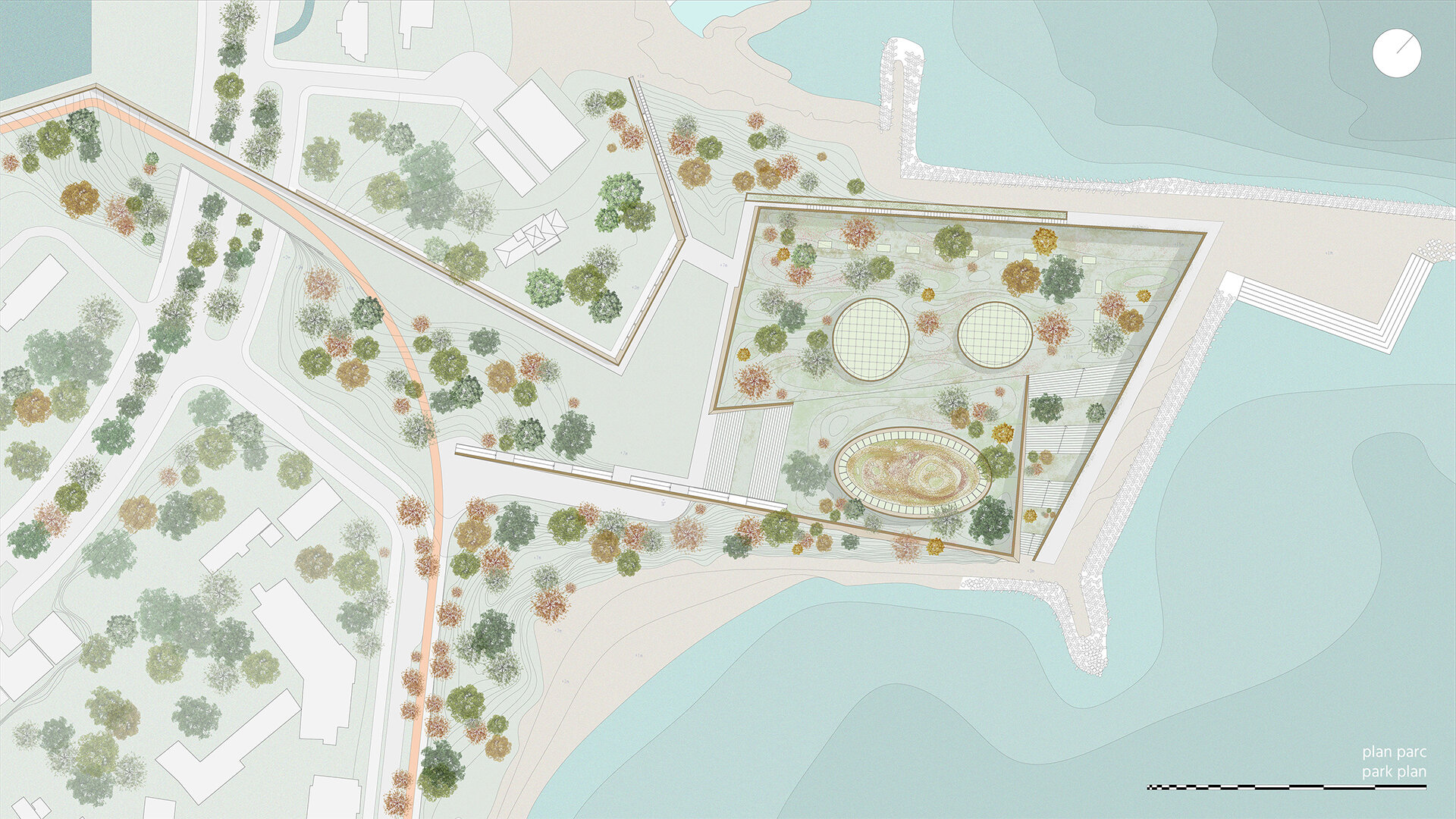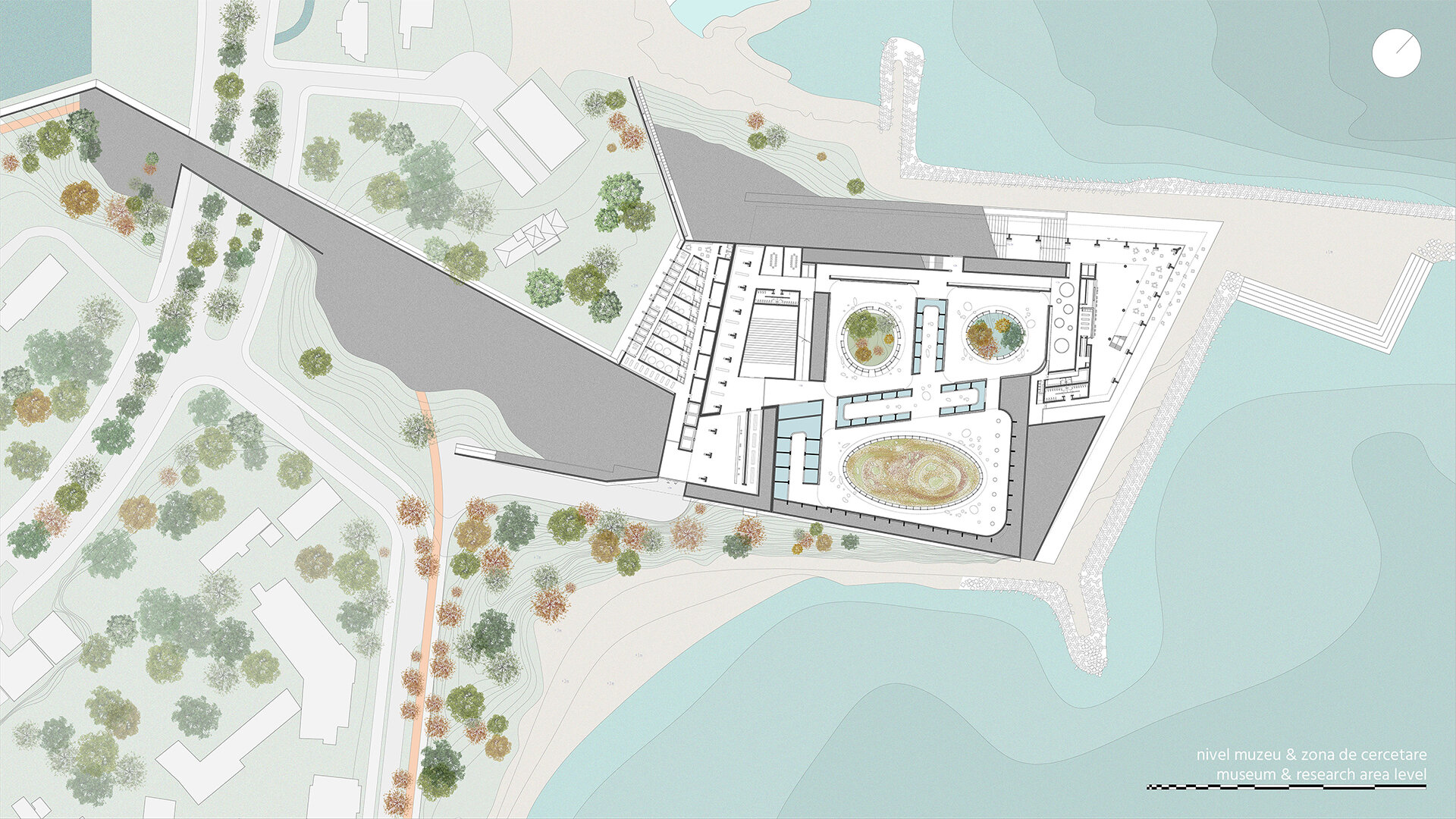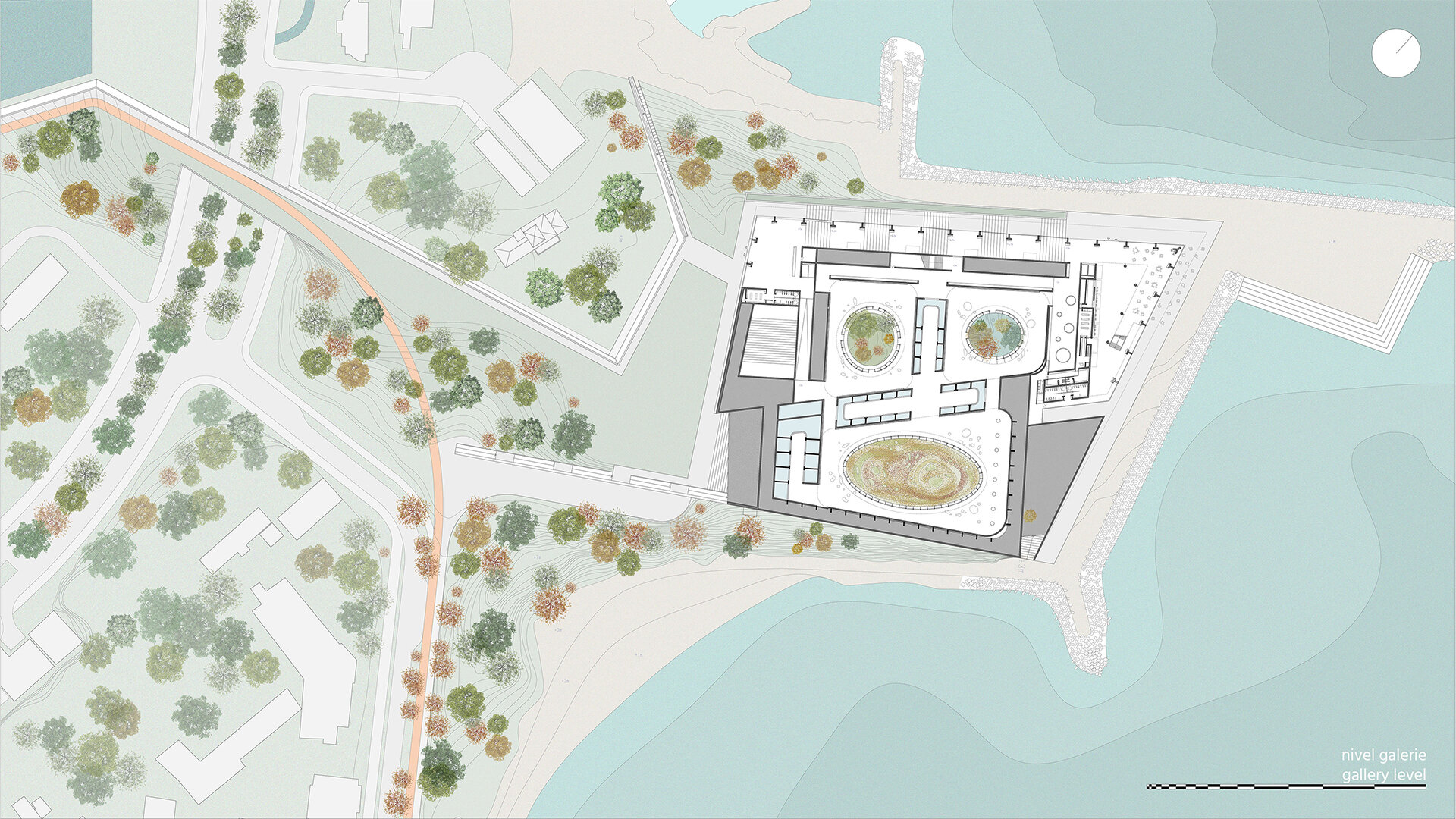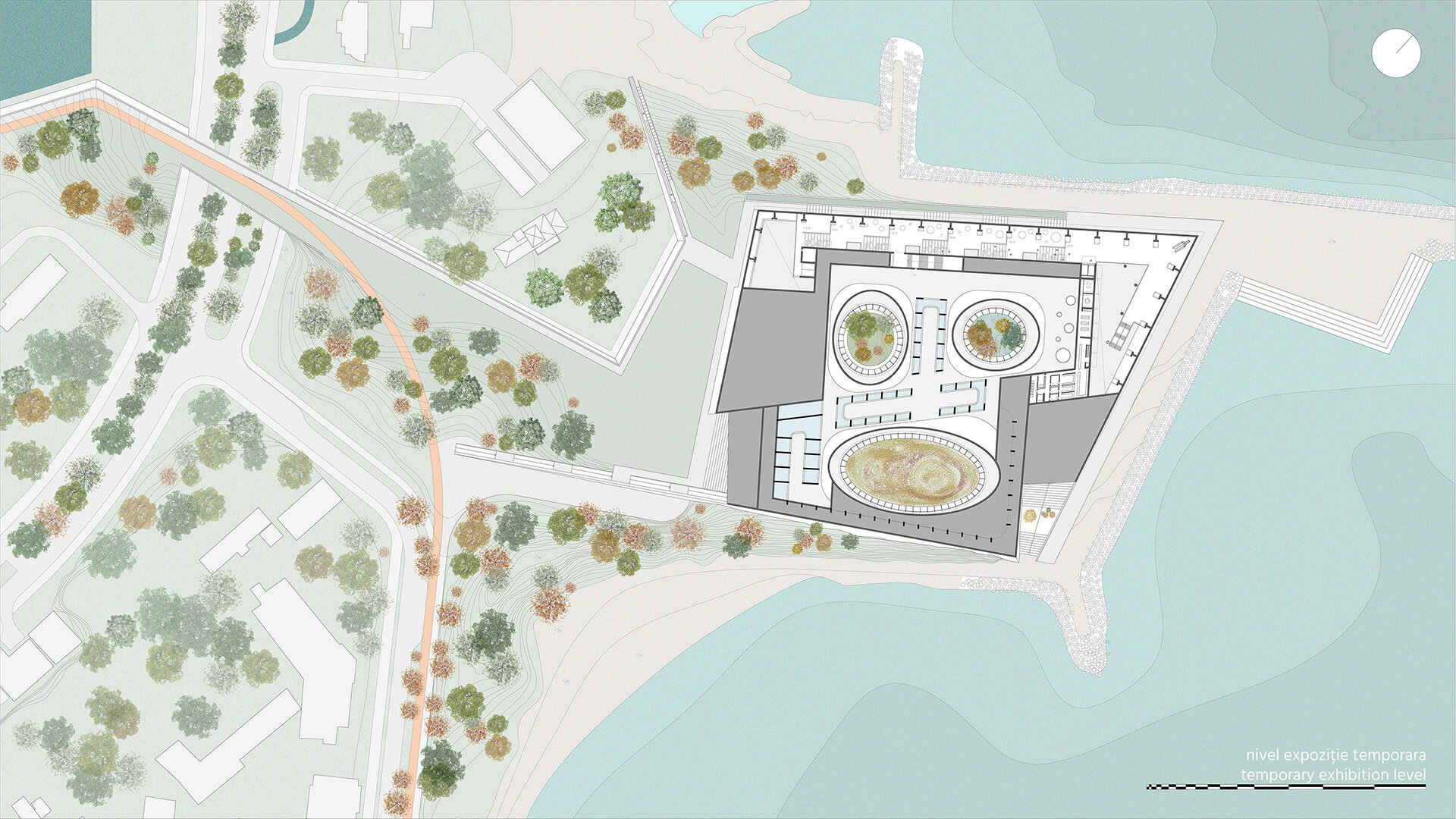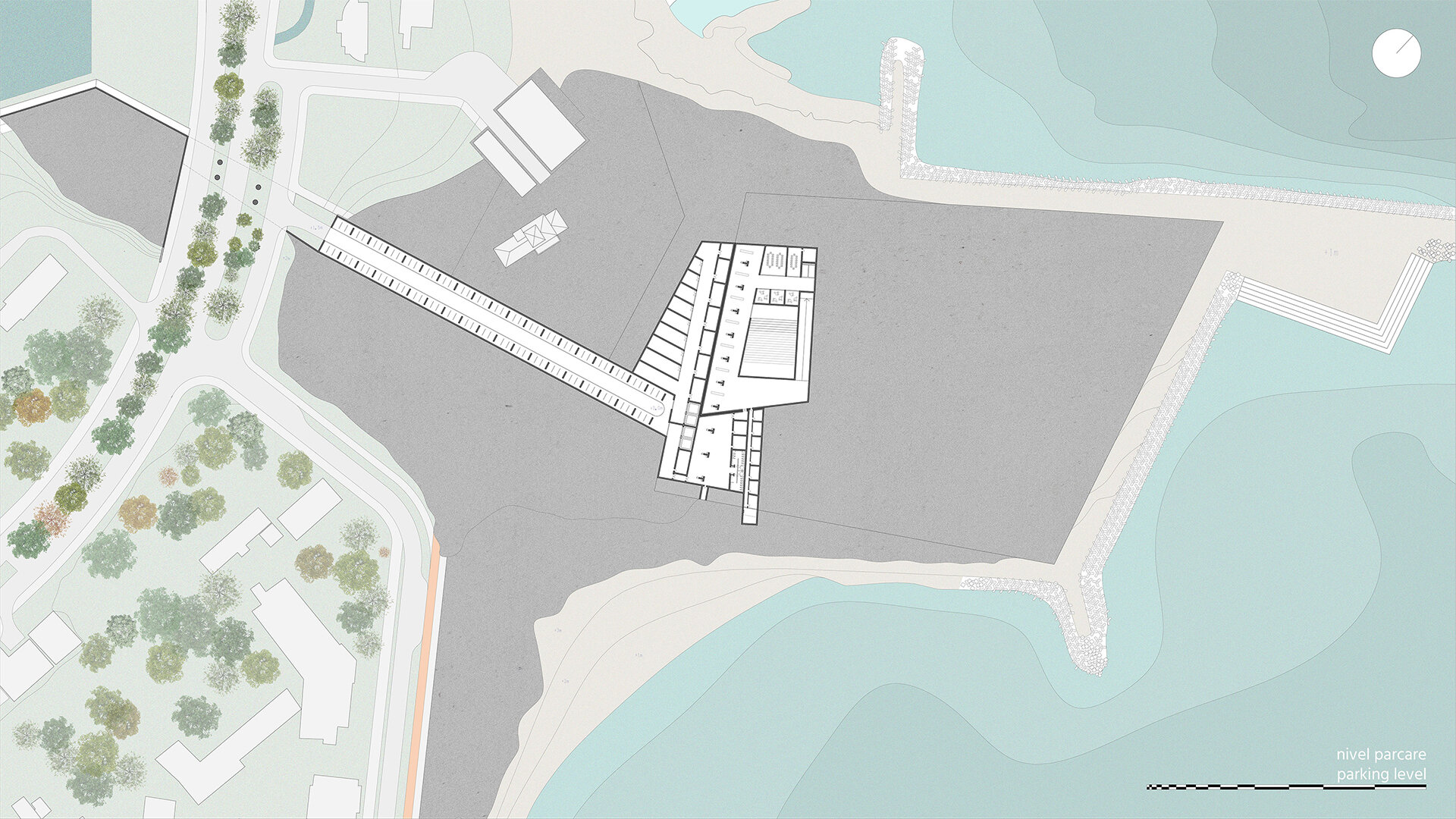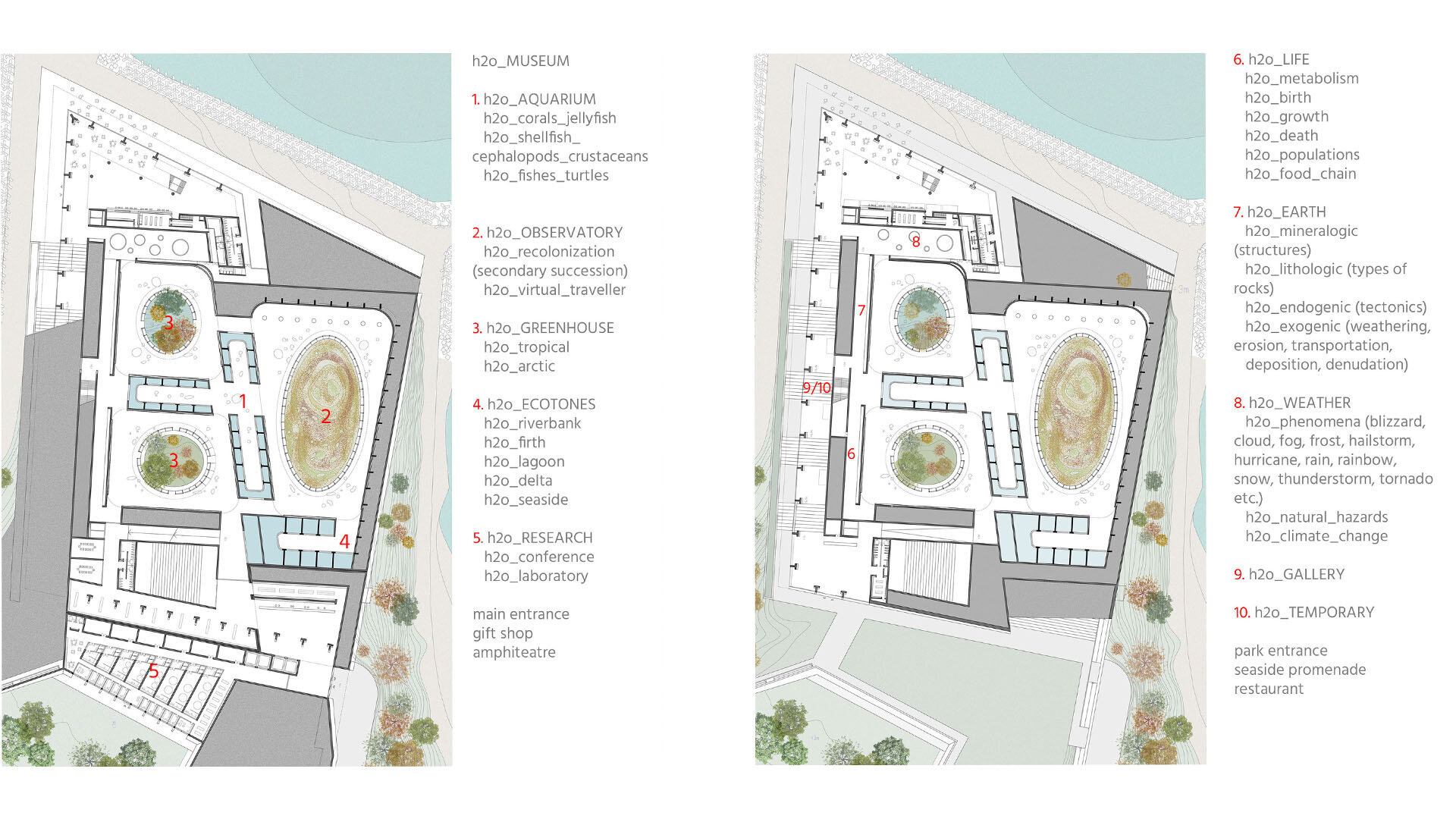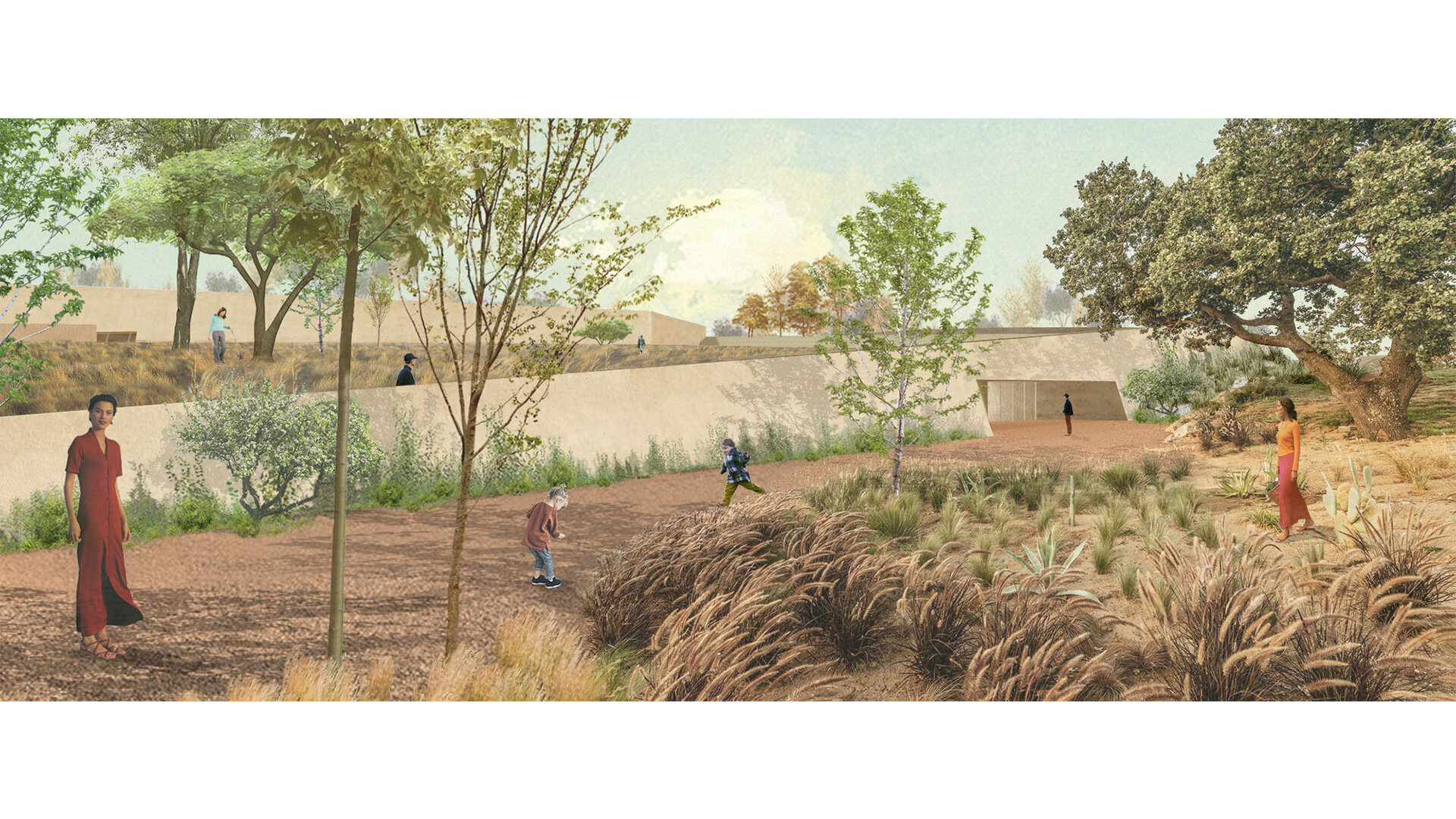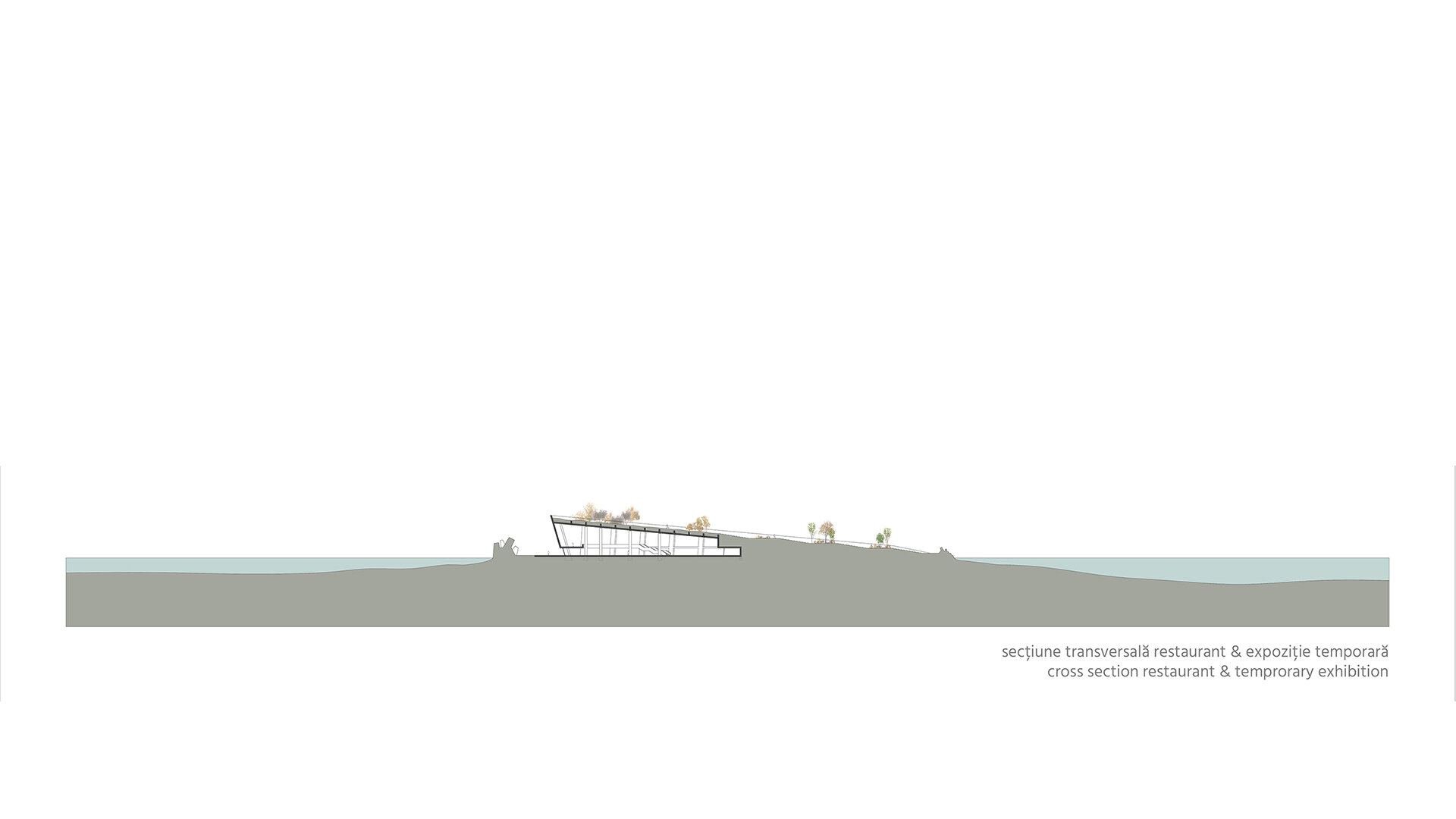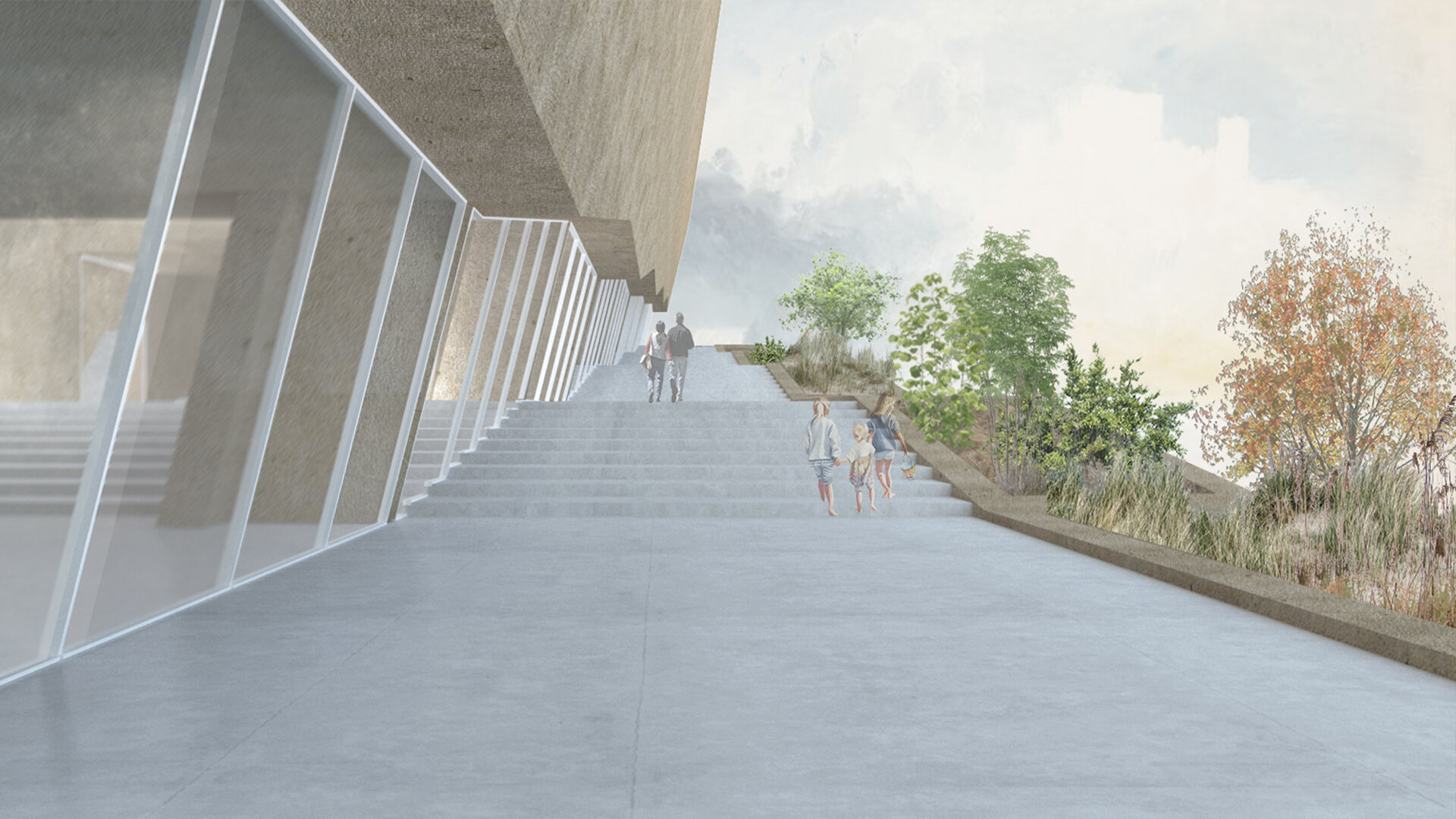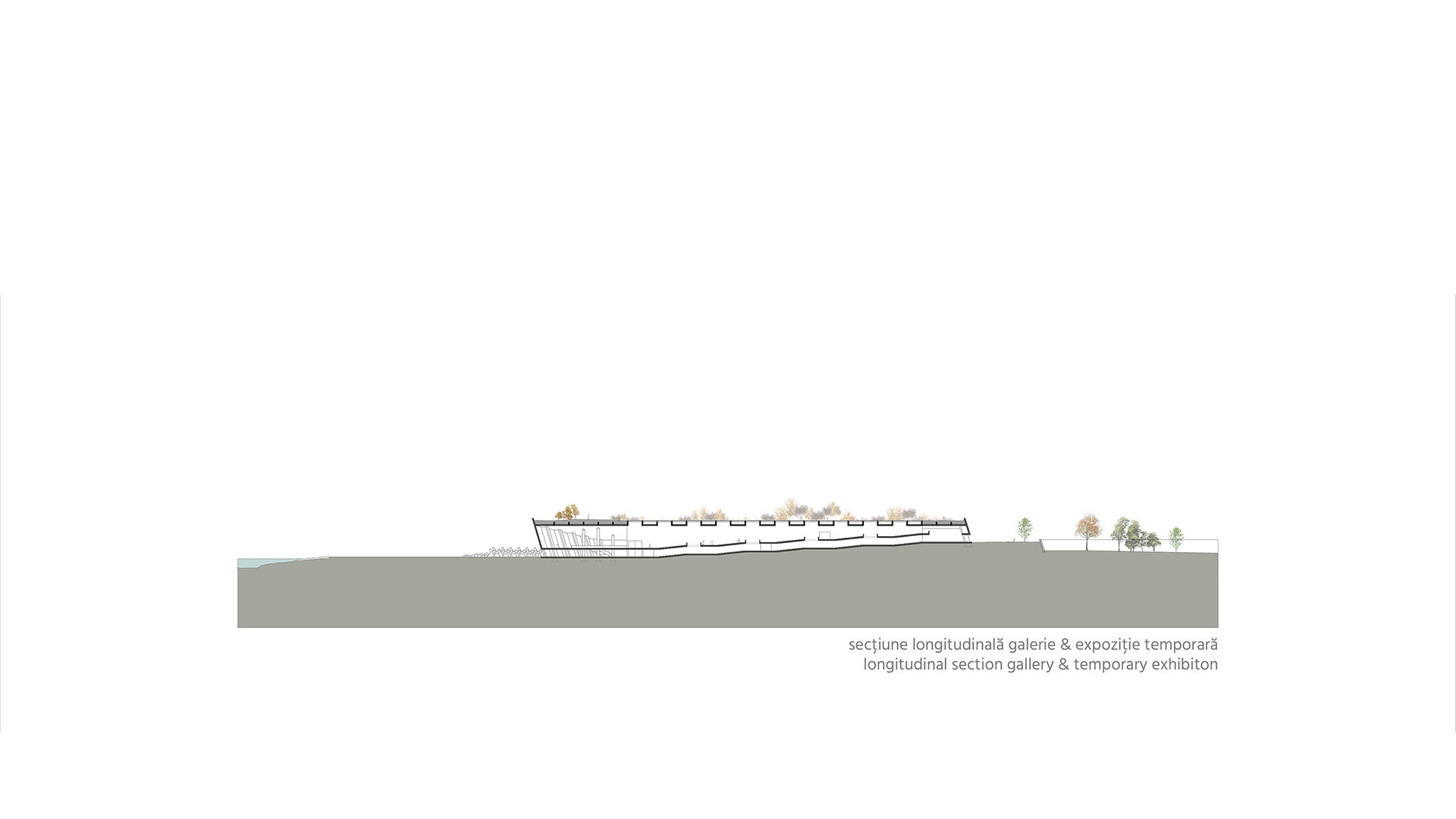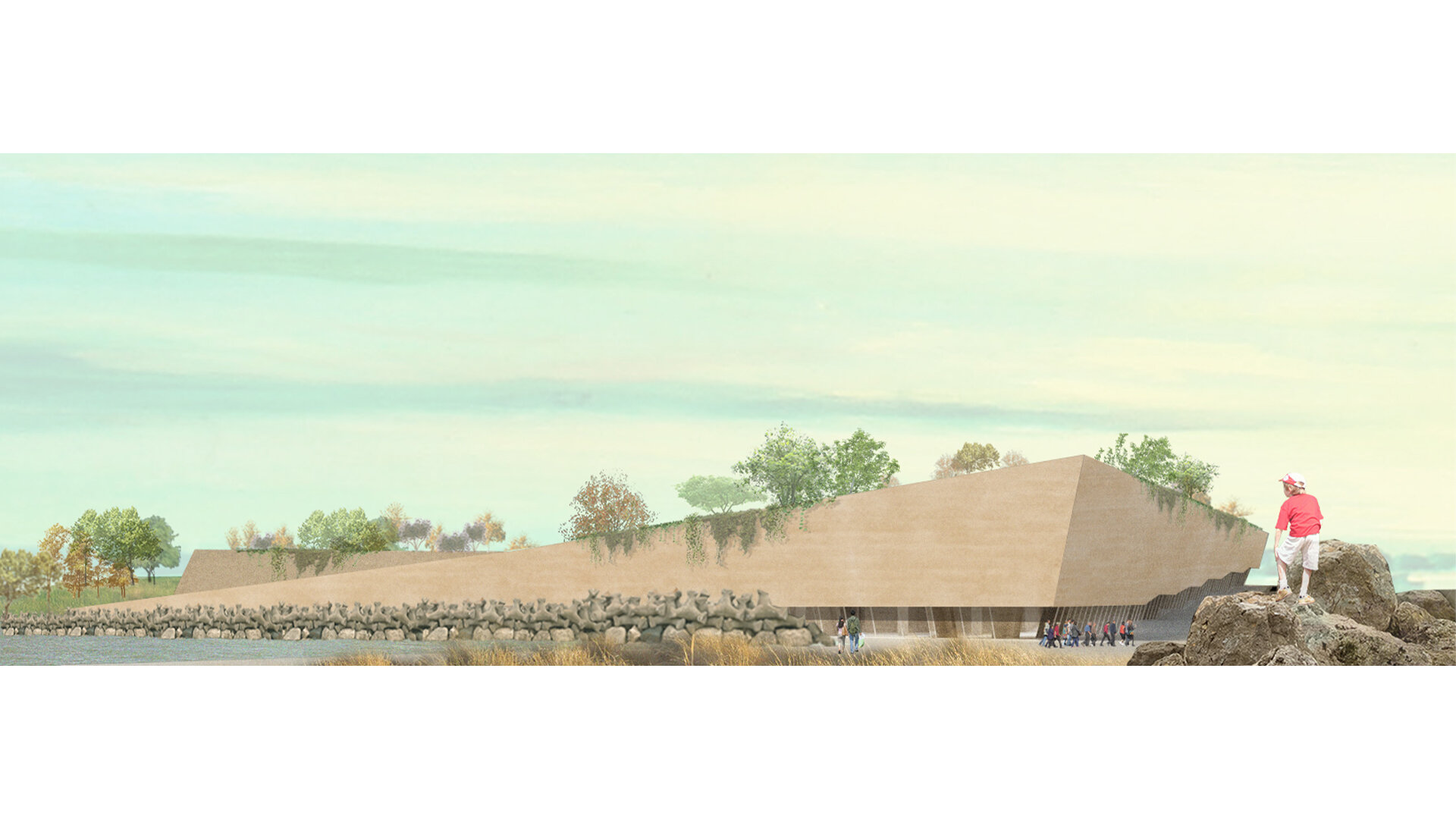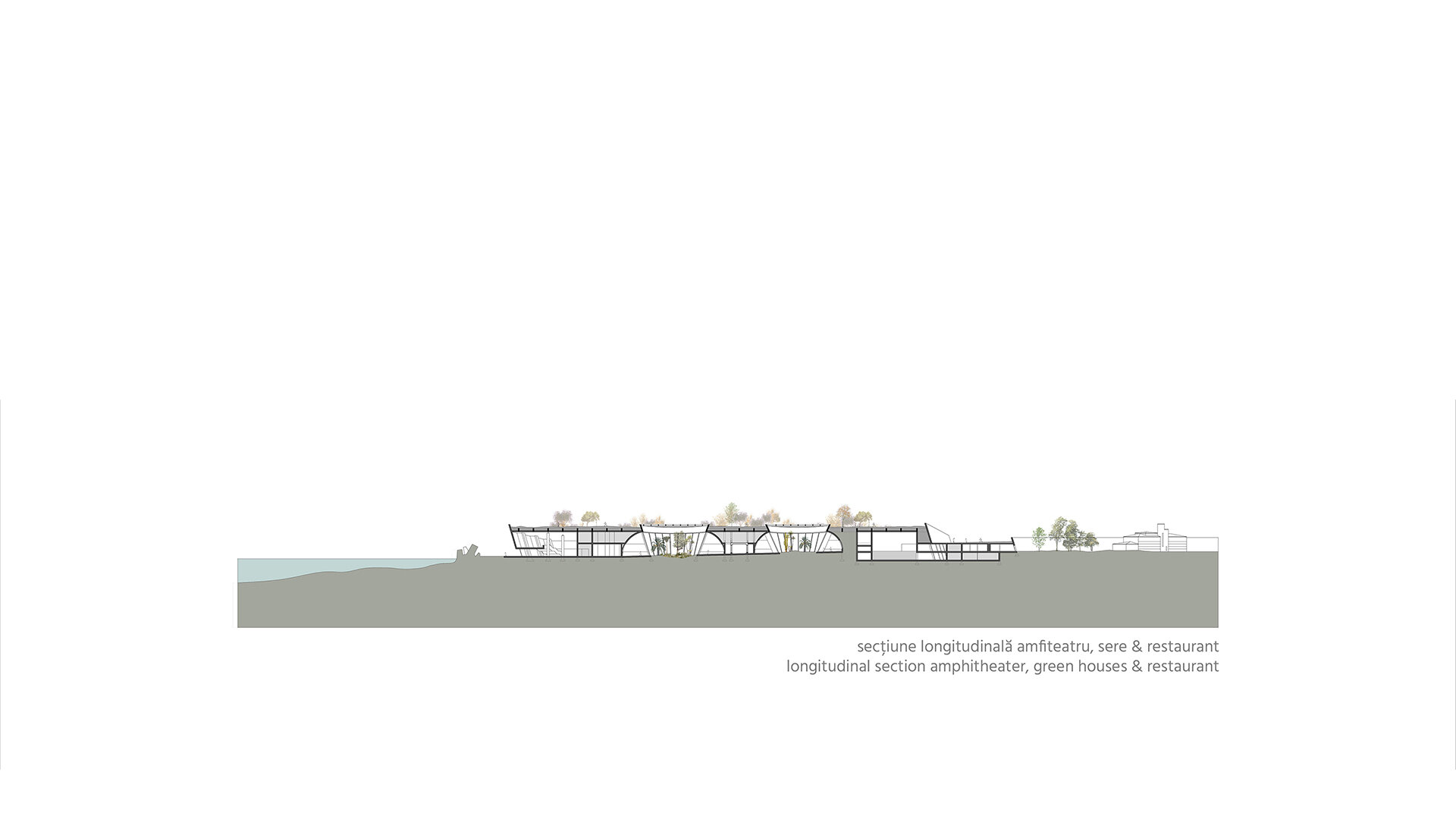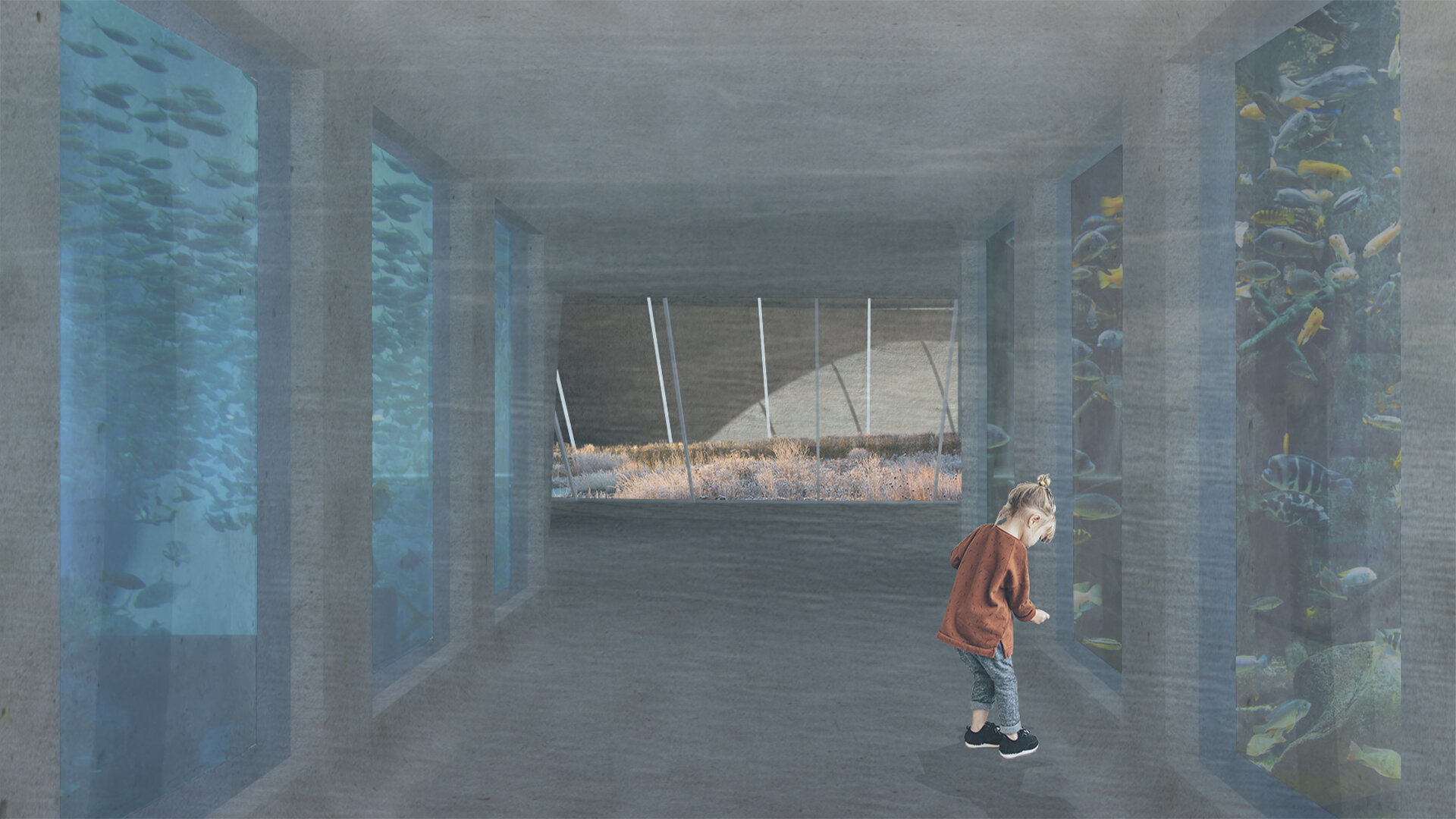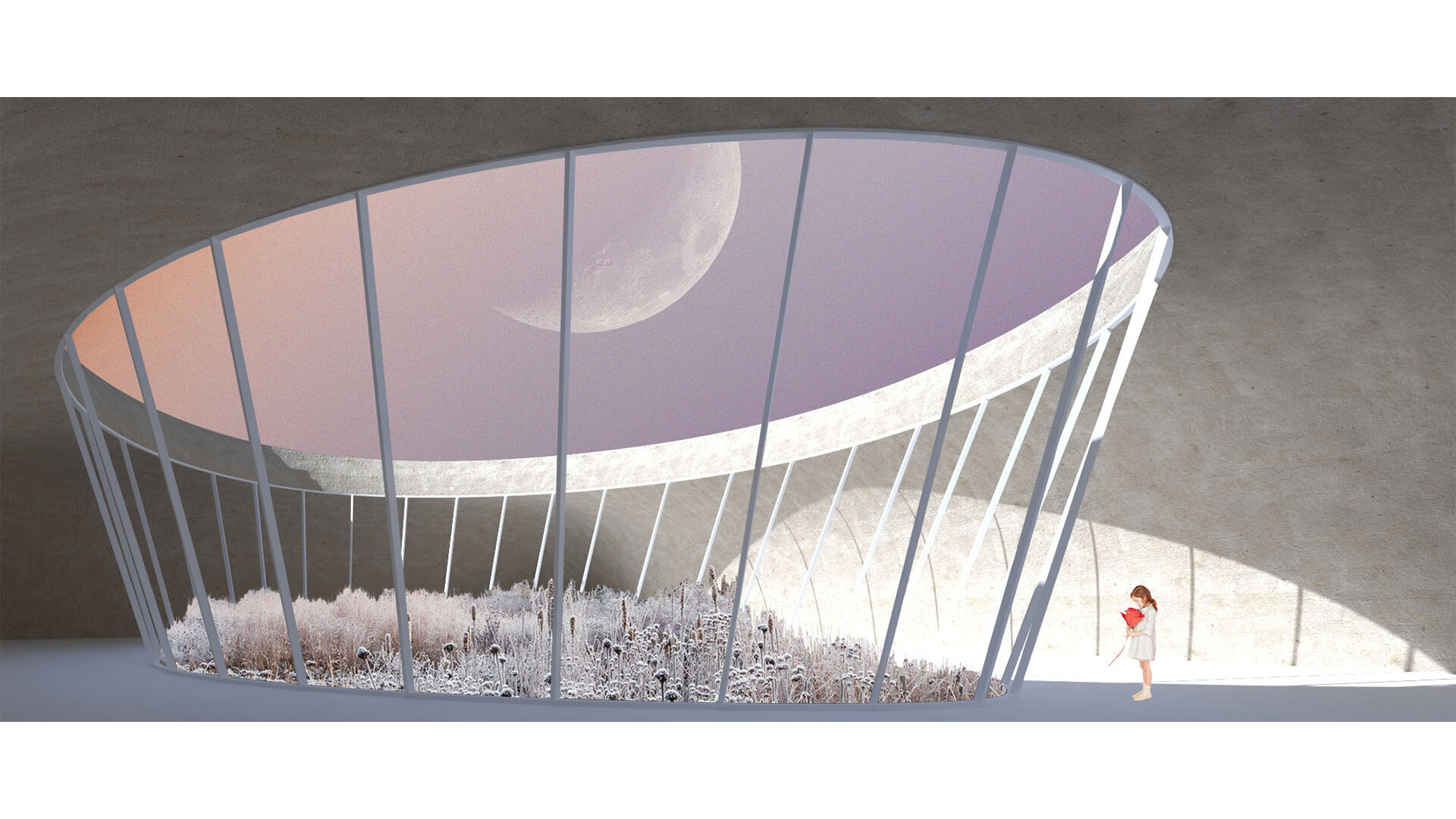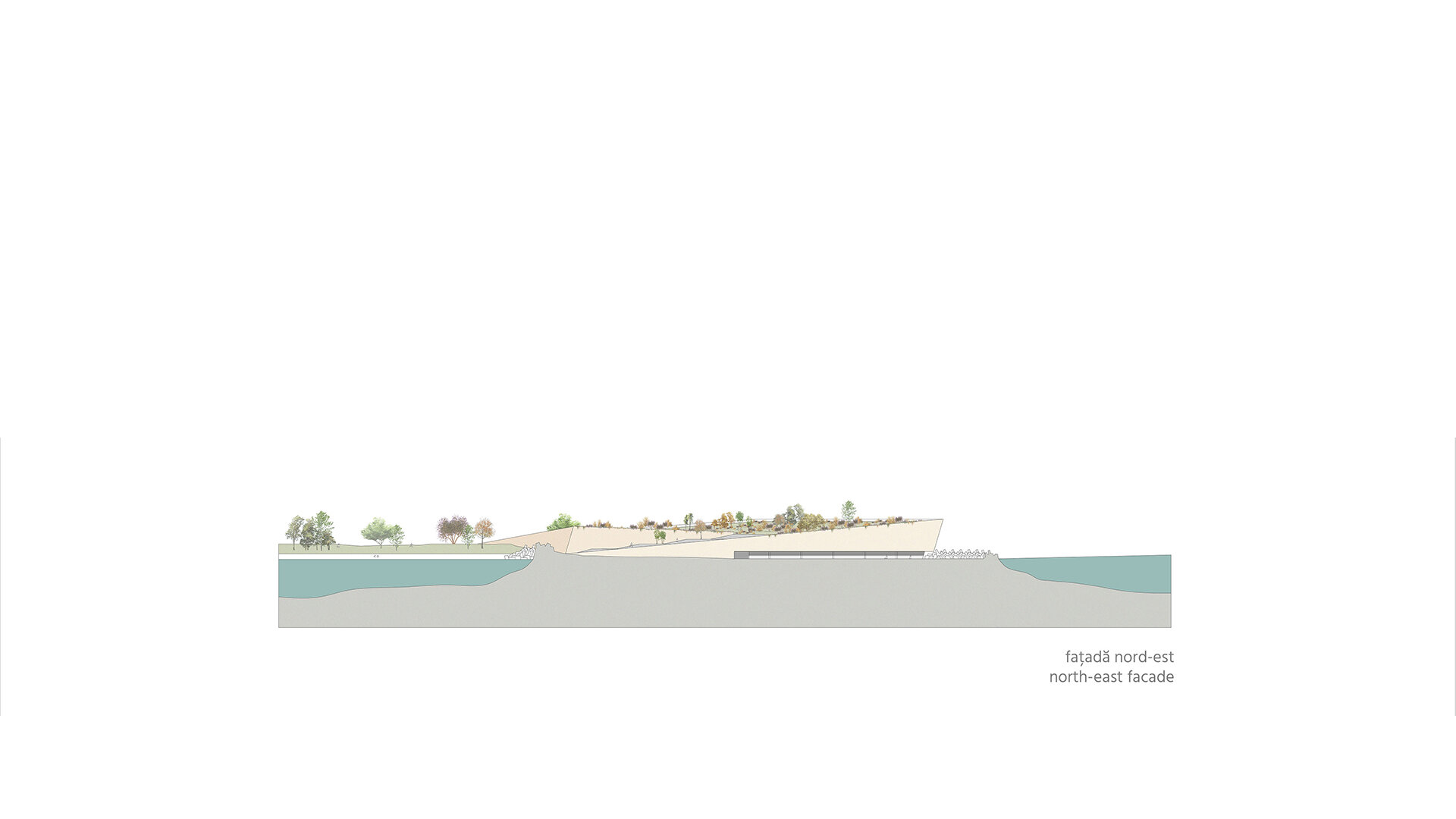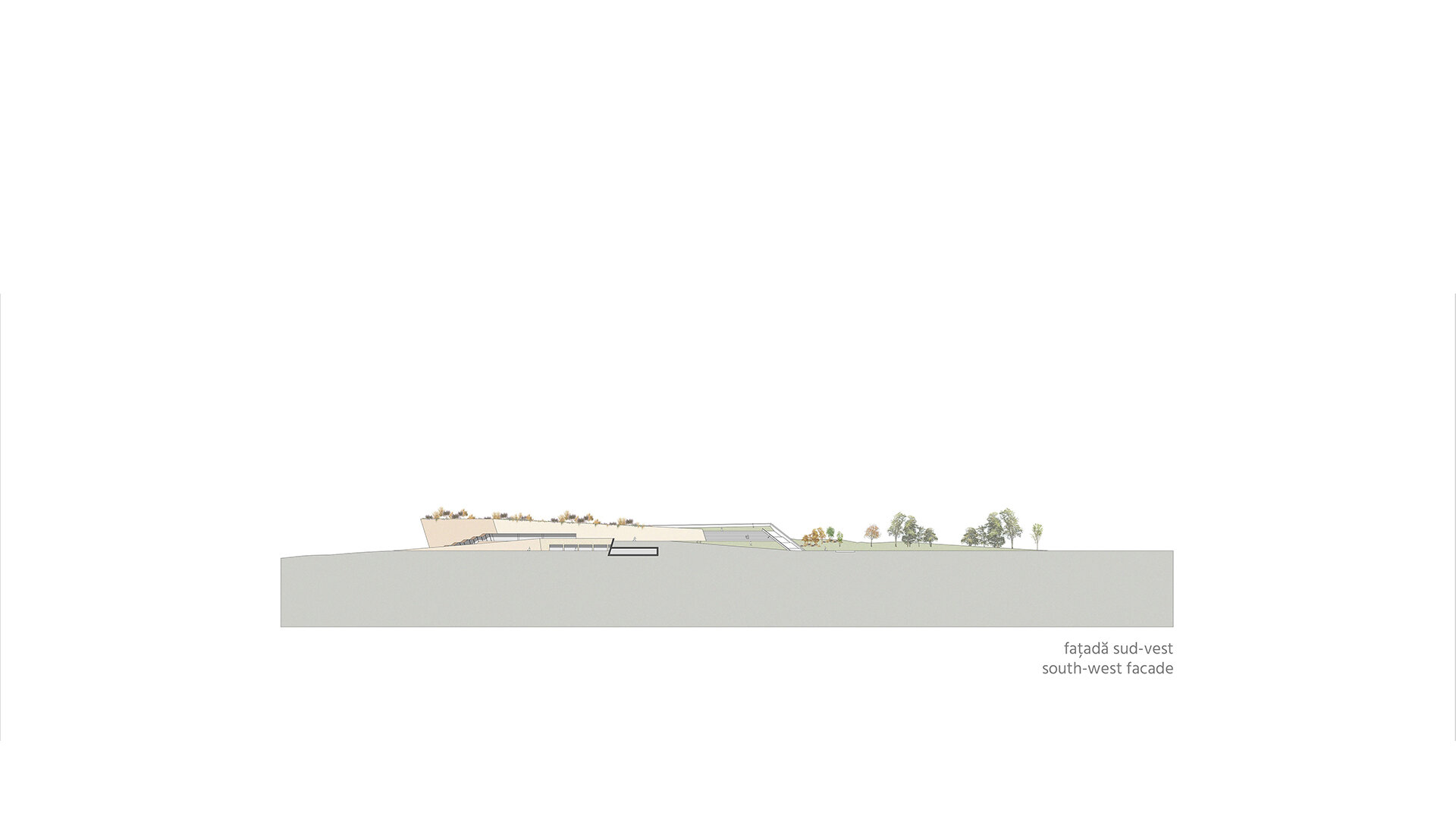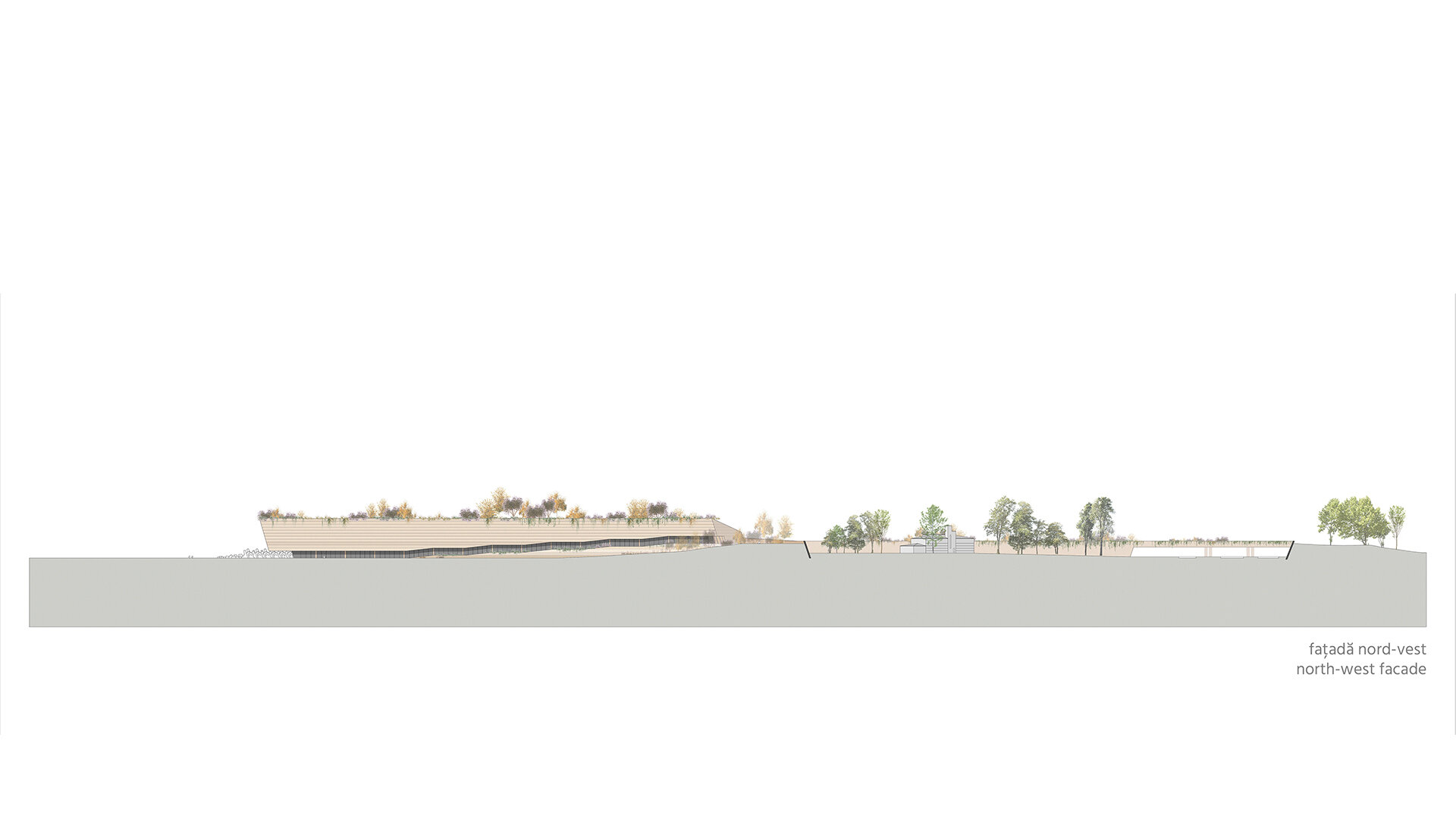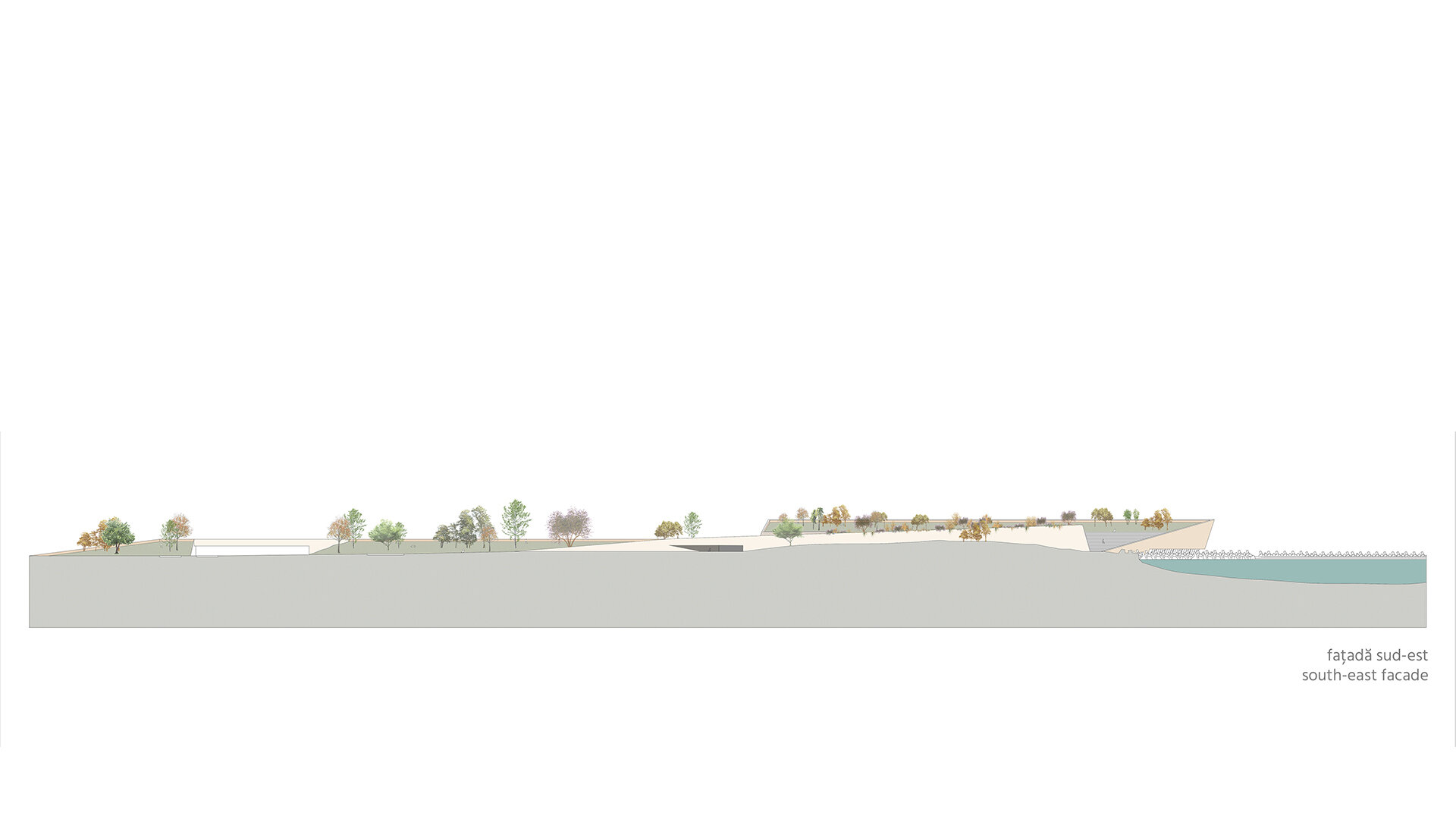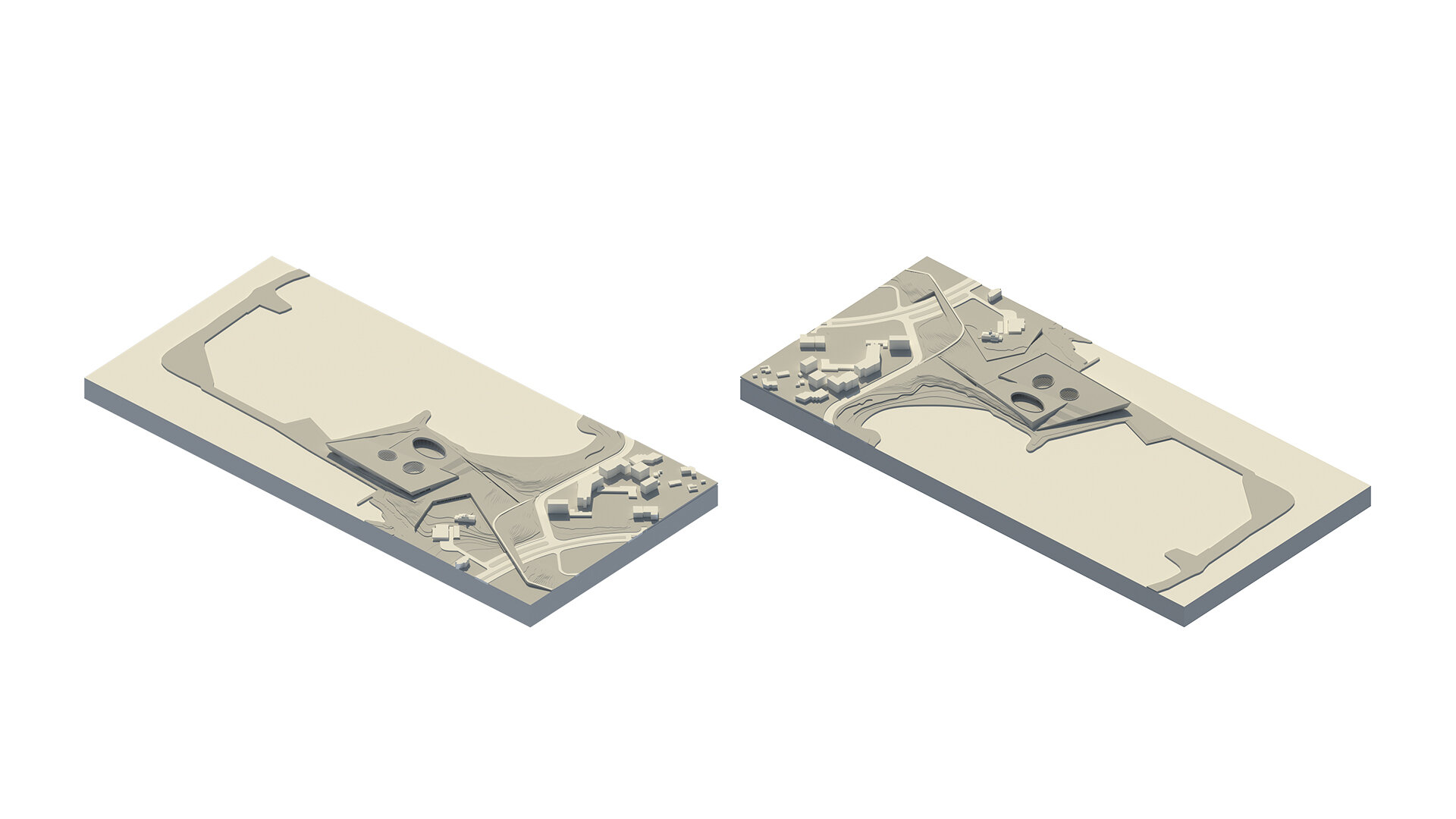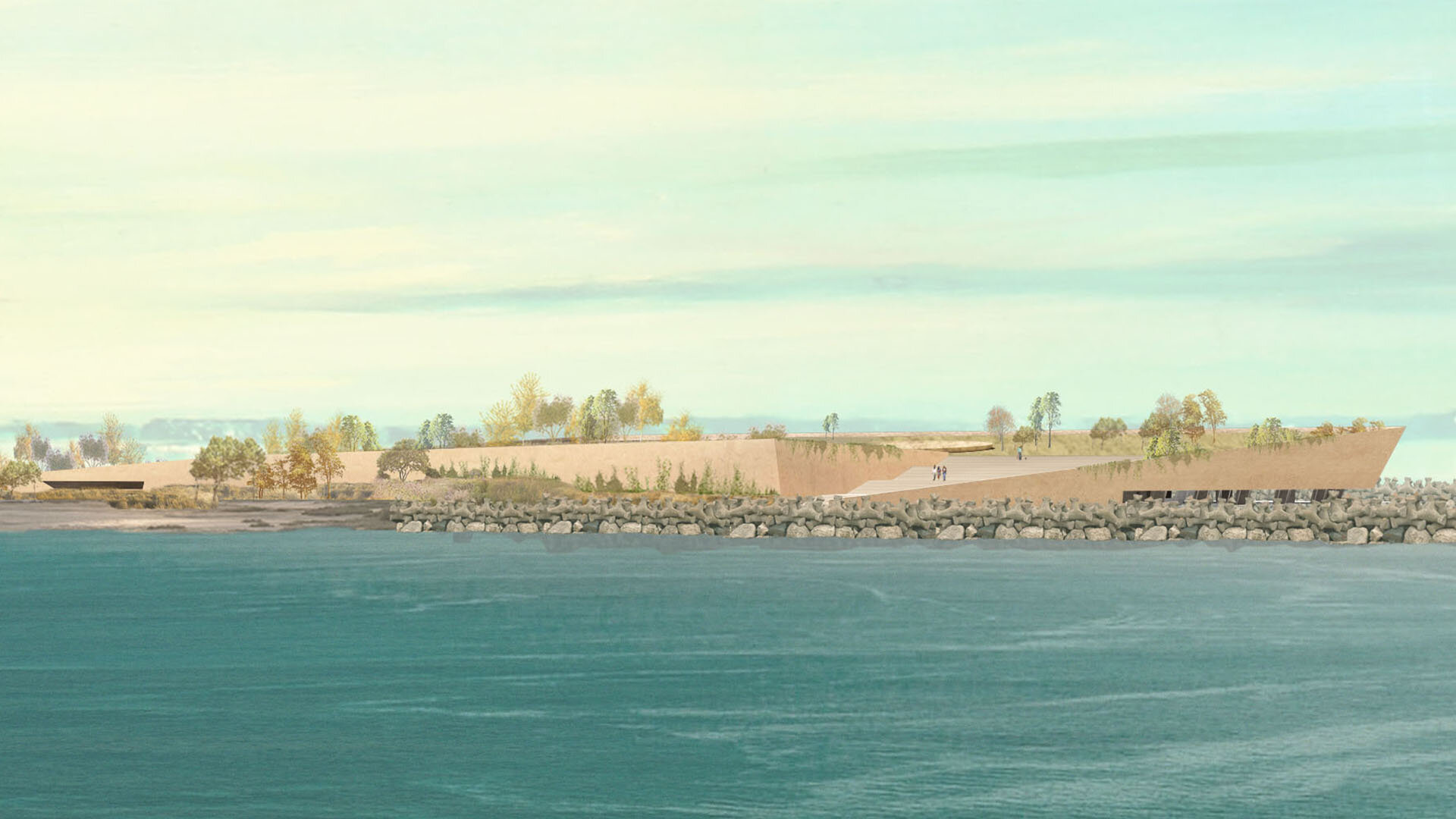
BiO'ceanografic
Authors’ Comment
Learning about local ecosystems through play and architecture in an alive museum. BiO’ceanographic finds space at the confluence of waters, in between lake Tăbăcărie and the Black Sea, on the neighboring site of the former Bio-oceanographic institute, founded by Grigore Antipa in 1936. Here, successive deposits of residue formed a new, anthropic topography: building material.
On both master-plan and object scales, the intervention accounts for its surrounding natural elements. It speculates and augments the line of contact between human, vegetal, mineral, and aquatic space.
The architectural tapestry of Constanta had ruptured during a time of great egocentrism, where private instances took reckless action upon the urban fabric. BiO’ceanographic looks to sew back together loose threads and re-establish broken links between the human habitat and local natural ecosystems. It’s about bringing back the horizon to a city that keeps looking away from it.
The museum showcases a biotope contained within the themed greenhouses, aquariums, and observatory. It is around these alive capsules that the interior space begins to structure itself. A vegetal shell wraps overtop the park. The research center activity feeds the exhibition with relevant content, turning the museum into an experimental environment.
A tectonic movement of earth plaques makes room for this activity to take place and continuously recomposes the image of the horizon. The alive museum transforms in time, and during its expansion, it educates about and protects nature.
The museum is moment 0; the starting point of a walk around the lake or along the seaside. A park with tentacles, underneath which a surprising world of marine and vegetal life hides. A few entryways lure you in, through the long concrete walls, under the cover of the earth. The overtop walking routes remain uninterrupted and sculpt the existing topography in a swoop.
- Urban integration: Living on George Georgescu street
- Extension of the Theological Seminary of Roman
- Revitalising the historic district Mântuleasa – garden dwellings
- A courtyard with music. Arts highschool in Bucharest
- Văcărești Nature Reserve Infrastructure
- Walk through Walls
- “Tranzit House” – Center for contemporary art and thinking
- Revitalisation of Quarteirao Portugalia – Living spaces in Lisbon
- Nanotechnology Research Center – Floresti power plant conversion
- Institute for Reseach and Documentation of Arad’s Cultural Heritage
- The Royal Foundation. The center for awareness of Romanian royal values and patrimony
- A new identity for disadvantaged communities. Social assistance center in the 5th district of Bucharest
- The Museum of Communism
- Refurbishment and expansion of the Bath Pavilion, Băile Govora
- Chronicle of a chamber dance – Cesianu House and Tănase Theater
- BiO'ceanografic
- Fishmarket in Urayasu, Tokyo
- Hebrew heritage recovery in Chisinau. Community Center
- Constanta Port Maritime Museum
- Rural revitalization. Change of function for a Spiru Haret type school from Zorile village, Grădinari commune, Giurgiu county.
- Regeneration of the water front. Tha Tien market. Bangkok
- ACCADEMICA – Creative laboratories & University residences - Victoria Passage, Bucharest
- Polyvalent Theater and Arts Incubator
- The Agricultural Active Learning Center of Caracal, Romania
- Forest Soul – off-grid ecotourism complex
- Ir(recoverable) industrial ruin
- Sulina Shipyard – Reed Catalyst
- Conversion and extension. Hotel in Eforie Sud
- Rebuilding the Cantacuzino Domain. Pavilions and Equestrian Centre in the Gardens of Petit Trianon
- Floating Island: A scene of urban life and waterfront in Nice
